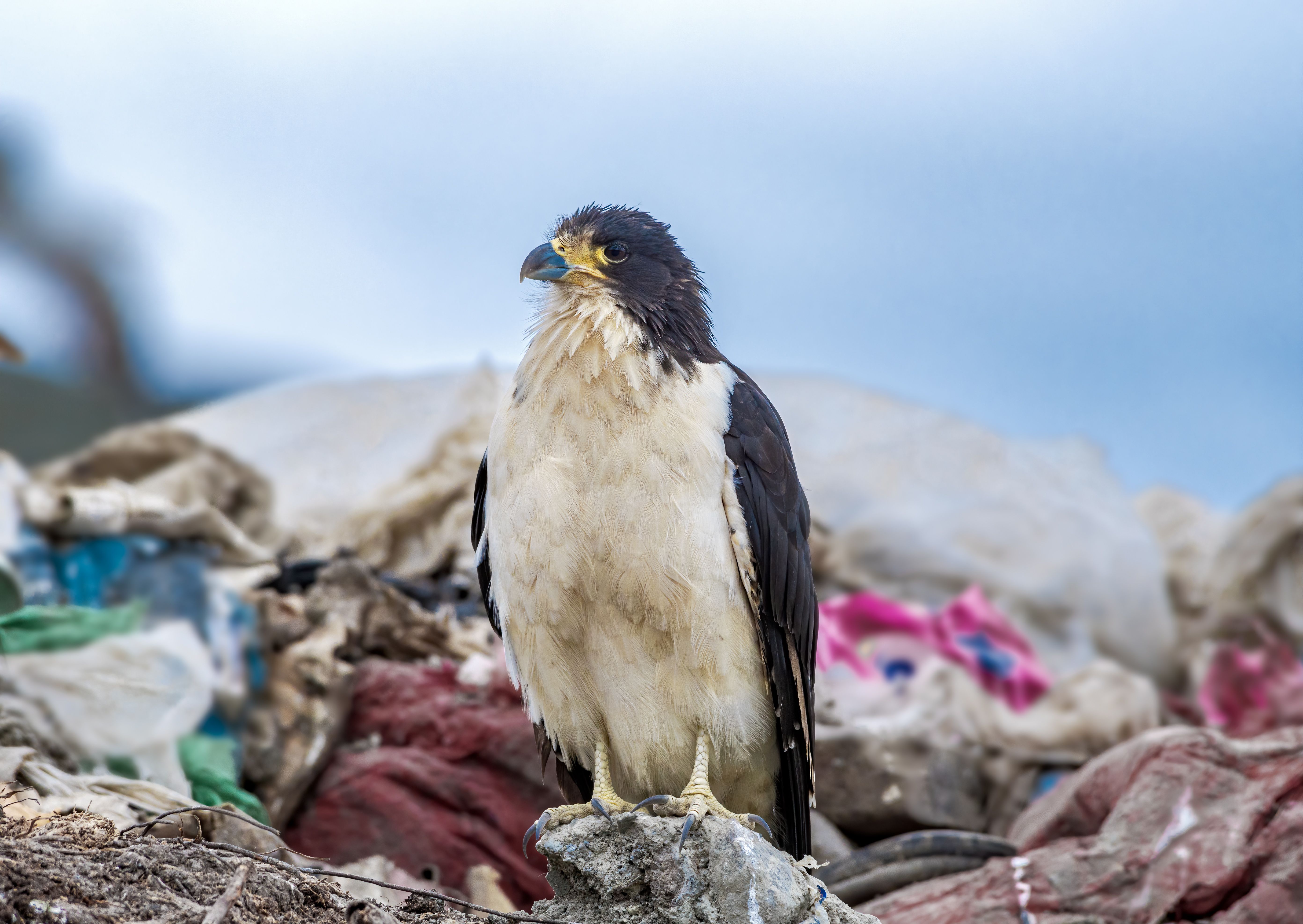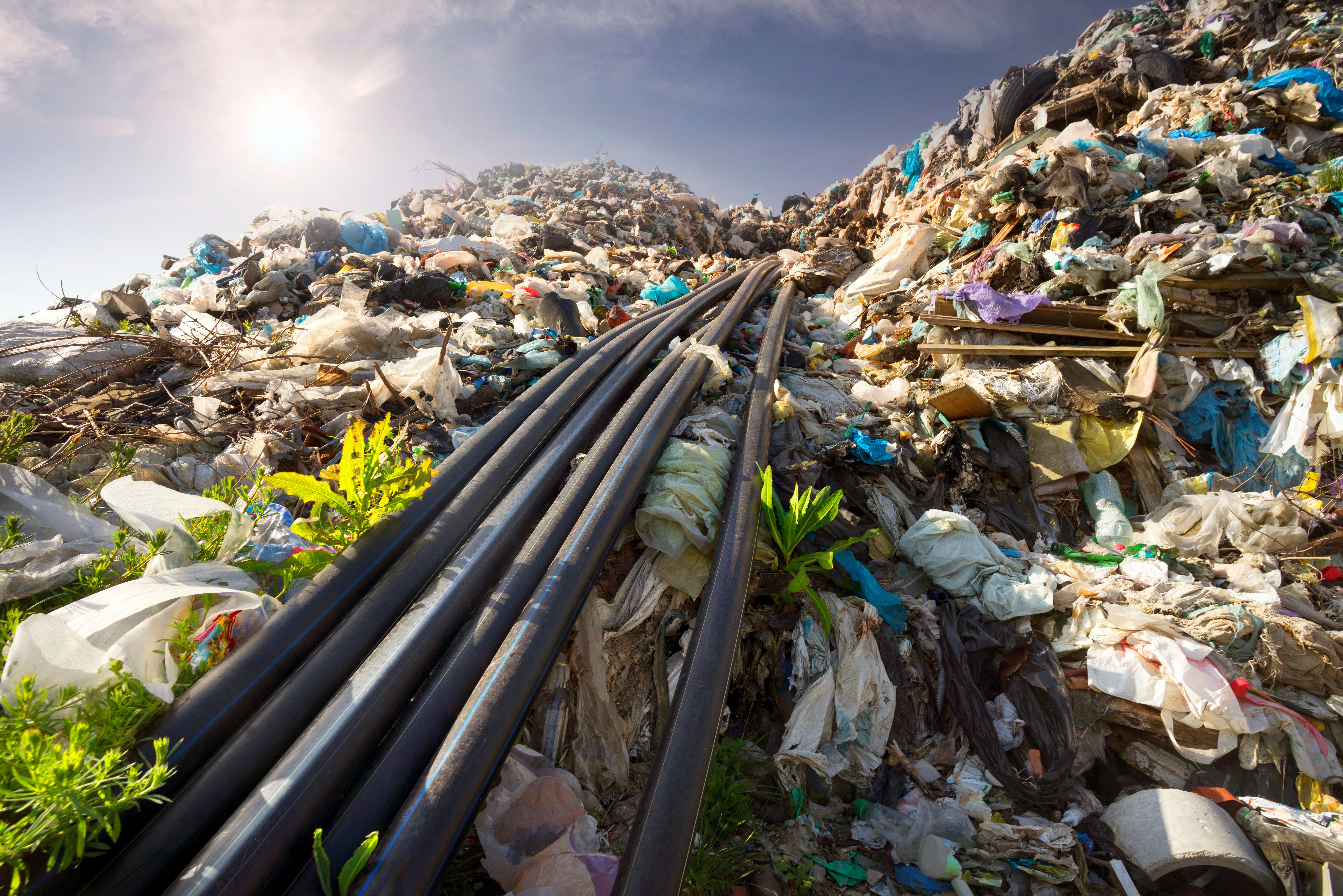What it is
Decomposing trash is one of the biggest sources of methane in South America. Methane and other gasses are released when bacteria break down organic waste—such as food, garden waste, paper, and textiles—in landfills. Landfill gas (LFG) capture systems can capture 40-60% of these methane emissions and use them to generate electricity or produce renewable natural gas (RNG). As an added benefit, landfill gas capture systems also minimize air pollution that may harm nearby communities.

Where it can be used
LFG capture systems are typically installed in large landfills, serving more than 100,000 people, to make methane capture as efficient as possible.
Who’s doing it
Many South American countries have LFG capture systems. Some of these were developed through the Clean Development Mechanism (CDM), a United Nations initiative to fund emissions-reducing projects.
In Loma Los Colorados, Chile, an LFG capture system serving over 3 million people captures methane to produce electricity for the National Interconnected Electric System. In Maldonado, Uruguay, with LFG they produce up to 1500 MWh of electricity annually, drawing on waste from the Maldonado Region. It can supply energy for 500 households, assuming average electricity consumption of 3 MWh per household per year.
How it works
LFG capture systems are installed in phases spanning several years. Methane cannot be captured until the system is complete. Landfill gas is collected through a pipe system that directs the gas to a power station where it is flared to create energy. The energy can be directed to nearby houses and businesses or used to generate electricity for the local grid.

The amount of methane captured depends on four main factors.
- The anaerobic conditions of the disposing site: The climatic conditions and the characteristics of the bacteria present in the landfill affect the rate at which waste breaks down and how much methane is generated.
- Soil coverage of the landfill: To create optimal conditions for breaking down organic waste, waste must be covered with soil as quickly as possible.
- The extent of the piping system: Building piping throughout a landfill (and extending piping as the landfill grows) can increase methane recovery.
- Exposure to leachate: Leachate, which is a contaminated liquid created when rain or other water passes through waste, harms the environment and negatively impacts anaerobic conditions, which, in turn, affects the generation of landfill gas. Leachate collection and removal systems use pipes to collect and remove leachate from the landfill, and the landfill can be lined with clay and geomembranes to prevent leachate from leaking into the surrounding environment.
Policy considerations
Economics and financing
While landfill gas capture systems can generate revenue and turn a profit in the long term, building them requires costly upfront investments. The economic viability of projects is also shaped by demand for renewable energy and the cost of LFG energy relative to other options.
LFG capture projects may be public or private, and funded through a variety of sources. In South America, many projects have been funded by UN agencies and international development programs, including climate mitigation funding. Governments may consider tax incentives, public-private partnerships, bond financing, direct municipal funding, loan guarantees, and grants.
Laws and regulations
Governing authorities can facilitate the adoption of LFG capture products through laws and regulations. For example, landfill gas can be promoted as a renewable source under national energy strategies. Additionally, governments can create policies and initiatives that enable landfill gas capture systems to connect with the local grid and do away with restrictions on independent power producers producing renewable energy. Conversely, governments can adopt legislation that requires landfill operators to use systems that capture natural gas.